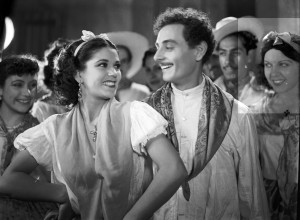One of my paramount goals in creating this website was to investigate how the internet might allow historians to change how they conduct research. By this, I don’t mean just looking at documents on-line instead of traveling in person to distant archives (although I’ve certainly done my fair share of this for my current project and have found it very helpful). Rather, I hoped to harness the power of the internet to see if one could discuss writing problems and generate research leads with a much larger and more diverse community than is usually available to scholars in the academy.
I had the idea to explore the internet’s potential to crowdsource history after completing the website for my last book, Shadows at Dawn: A Borderlands Massacre and the Violence of History. In this instance, I wrote the book first and then, while the manuscript was in its final production stages at the publisher, created a companion website. Over time, a fair number of people who stumbled across the website contacted me to relate family stories related to the event at the heart of Shadows of Dawn and even to offer sources that I’d never encountered before, since they were in personal collections rather than public archives. Although I could incorporate these individuals’ insights into my website (which has the virtue–and the vice–of being endlessly open to revision), it was, of course, too late to change my book manuscript. But perhaps there was a lesson here. Next time, I vowed, I would create the website first and write the book afterwards.

Fastforward to 2013 and this website for my current project on William Henry Ellis/Guillermo Enrique Eliseo. One of the great mysteries I’ve dealt with in tracing his life is figuring out what happened to his wife and children, who moved to Mexico City in the 1920s. Then, just two weeks ago, I was contacted by a historian at the University of Puerto Rico who had noticed my website. She is in the process of researching the history of cinema in Mexico, and brought my attention to the fact that a certain obscure Mexican actress named Victoria Ellis had donated some important early films to Mexico’s Cineteca Nacional in 1984. This was the first clue I’d had to what happened to Ellis’s family since the 1920s–and it was better than I could ever have imagined. Turns out that Victoria Ellis, W.H. Ellis’s only daughter, acted in at least one film, “A la orilla de un palmar” (“At the Edge of a Palm Grove”), a melodrama set in Veracruz in the 1930s. There seem to be only two copies of the film in existence, and I was able to watch one yesterday and see what Victoria Ellis looks like as an adult. In the screenshot above, she is on the far right. Since she was better known as a dancer, she participates in some folkloric dances at the grand finale of the movie. If I did not know her backstory, I could not tell that she was born in Mount Vernon, New York. And that is the point. Indeed, in all the many press releases about her 1984 donation to the Cineteca Nacional, she is identified as an “actriz mexicana” never as an American, let alone an African American. Ellis may have been passing as Mexican, but his daughter truly became Mexican.
Creating and maintaining a website costs a lot of time and money. I probably could my book on Ellis/Eliseo finished by now if I hadn’t invested my energies in my website instead. But would it be as good a book? Already, it seems, my hope that the web would generate new leads that I could never have found myself has been realized. . . .